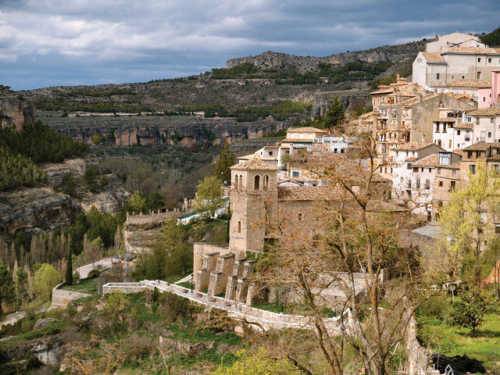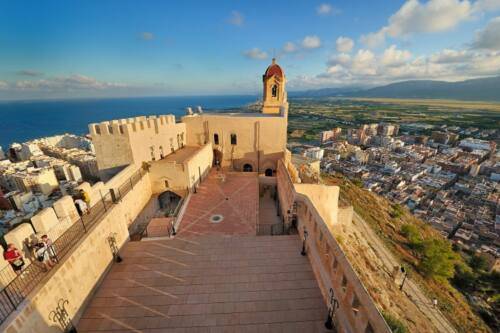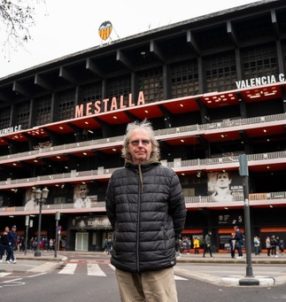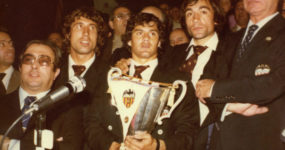Cullera and its surroundings are full of interesting places to visit.
To get there, you can take the lighthouse road, which cuts through the prettiest area of the town, around the lighthouse, with amazing houses and beautiful landscape. You can also reach the area from inland, on a road that runs alongside rice fields, which are always pretty spectacular and especially at dusk.
Once you’re in Cullera, it is worth going up to the castle for its views across a section of the Valencia coast. A hard climb, but incredible views. Once you’ve got your breath back, go to the port built around the mouth of the Júcar River. At the opening of the river, in the inlet opposite the town, there is a road that heads towards the sea, and then turns right towards the south. It’s a reasonably quiet road, through orange groves and crossing the occasional sluice, the traditional irrigation channels common to ‘la huerta’. When this road comes to an end, you come to a T-junction with a road that runs to Tavernes de la Valldigna in one direction and to the beach if you go the other way. Head for the beach, to right, heading south. You pass a bar and a road with a sluice running alongside. It’s the next road that you want to take, but before you do, it’s worth stopping off at the Tavernes de la Valldigna and its long beaches with fine white sand.
When you take the Cami del Mig you return to travelling through orange groves. (Orange groves are always a pleasure, but it’s worth remembering that it’s around April/May when the ‘azahar’ , orange blossom, is in the air, making cycling these roads a heady delight). The road takes you to the beginning of the Xeraco beach. Someway down this route you cross a ‘gola’, a wide sluice that connects the sea to the ‘marjal’, the shallow lake which is the source of the surrounding irrigation. This marshland has its own indigenous flora and fauna. The marsh is to the right of the route which takes you to Gandia. There are various tracks that run between the marjal and the road to Gandia, so you can dip between them whenever you fancy.
Gandia beach is popular with the tourists. Despite its popularity, it is good quality, with decent showers, toilets and beautiful fine sand. Now is the best time to go, to avoid the crush. The port is small but interesting and, of course, a good spot to eat fideuá (a seafood paella cooked with noodles) or a fish-based rice dish. You ought to see Gandía while you’re there – the old part that surrounds the church and the seaside are worth the visit. In fact, it’s a good place to stop, relax, and enjoy the food and the people. And this is the starting point for all sorts of trips inland, El Racó del Duc for example, an amazing route described in our website, www.orangebikes.net.
Orange Bikes
Editor Manuel Aguilar,1
Valencia 46001
96 3917551
Related Post
This site uses Akismet to reduce spam. Learn how your comment data is processed.


























Leave a comment